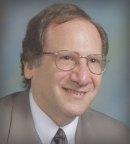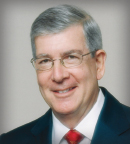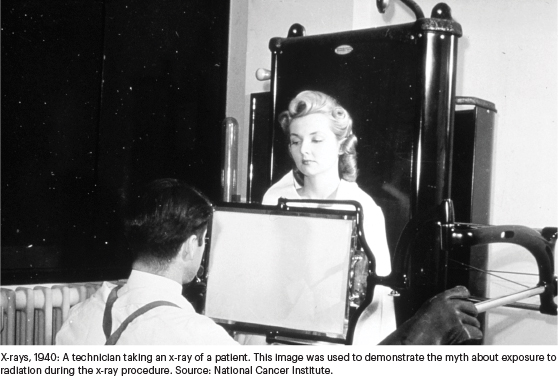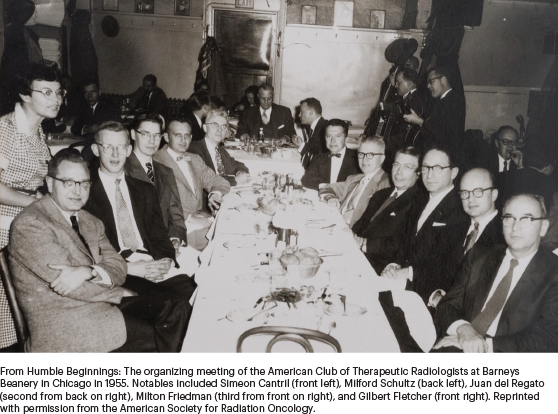
Christopher Rose, MD, FASTRO

Allen S. Lichter, MD, FASTRO, FASCO
Radiation therapy has long been one of the three pillars of cancer therapy—surgery, chemotherapy, and radiotherapy—only recently joined by what is widely considered a fourth pillar, immunotherapy. In part 1 of this two-part report, we trace the beginnings of radiation oncology in the United States and how it grew into the field we know today. In part 2, we will consider the many technological advances that have played a part in the field’s development and our evolving understanding of the biological concepts involved in the discipline.
Origins of Radiation Oncology
Two seminal events established the basis for the field known today as radiation oncology. The first was the announcement in late 1895 of the discovery of x-rays by German physicist Wilhelm Conrad Roentgen.1 These then-mysterious electromagnetic waves were emitted by passing an electric current from a cathode to an anode inside a vacuum tube. The x-rays could not only expose a photographic plate, but when the hand of Dr. Roentgen’s wife was placed over the plate, the bones within the flesh could be observed in the image.
What made this discovery particularly unique was the simplicity of the experimental apparatus. Numerous labs were already working with cathode ray tubes and were easily able to replicate these x-ray experiments. It did not take long for investigators to recognize the biological effects of radiation. Skin erythema resulting from x-ray exposure was commonly seen. Exposure of the skull led to epilation. In early 1896, a Chicago physician named Emile Grubbe claimed to have treated the chest wall of a woman with recurrent breast cancer.2 A wave of clinical experimentation soon followed.
The second event was the discovery of naturally occurring radiation emitted by grains of uranium-containing salt (pitchblende) by French engineer Henri Becquerel. Polish-French physicist Marie Curie then set about to isolate the source of this radiation since the measured radioactivity of pitchblende far exceeded what could be produced by uranium alone. This led to the discovery of a new element that she named radium in 1898. This substance was also quickly discovered to have biological effects, and physicians began using radium to treat cutaneous cancers with dramatically positive effects.
With external x-rays from a Roentgen apparatus and more powerful radiation emitted from radium, the field of therapeutic radiology was launched at the dawn of the 20th century. Today, estimates are that more than 5,300 radiation oncologists are practicing in the United States, staffing about 2,300 facility sites. More than 3 million radiation therapy survivors are alive in America today, and the number will grow to 4 million by the end of this decade. How did all this development occur in a little over 100 years?
The European Influence
A disproportionate amount of the early development of the field took place in Europe. The initial therapeutic radiation treatments that took place in the early 1900s used large single exposures that could eradicate a lesion but resulted in tissue necrosis. In the 1920s, the French investigators Henri Coutard, MD, and Claude Regaud, MD, demonstrated that dividing the total dose into many smaller treatments delivered over several weeks could produce a cure without severe damage to normal tissue.3 Thus, the concept of fractionation was developed and has been an essential part of clinical radiation ever since.
In parallel with improved treatment using external-beam therapy was the deployment of radium placed into needles or seeds and inserted directly into malignant tissue. This was referred to as brachytherapy (brachy- meaning short), the radioactive source being located within or next to the tumor. Cancer of the cervix was one of the first malignancies treated successfully using radium, and the implantation of cervical cancer with radioactive sources remains a mainstay of therapy for that malignancy.
Many physicians trained in Europe, often with Dr. Coutard. As the political climate in Europe darkened in the 1930s and 1940s, some of these practitioners moved to the United States and were critical in the establishment of therapeutic radiation in this country. Among them were Franz Buschke, MD, who started in Chicago, then Seattle (Swedish Tumor Institute), and later moved to San Francisco (University of California); Simon Kramer, MD, from England, who located in Philadelphia (Thomas Jefferson University); and Juan del Regato, MD. Dr. del Regato was born and educated in Cuba but studied with Drs. Coutard and Regaud before moving to America.
Interestingly, Dr. Coutard himself spent time in the United States at the Chicago Tumor Institute. It was there that he treated Spencer Penrose, a wealthy industrialist who subsequently attracted Dr. Coutard to Colorado Springs. After Mr. Penrose’s death, his wife Julie Penrose established a cancer hospital in his memory—an institution that would play a seminal role in the development of American radiotherapy. Dr. Coutard returned to France, and Ms. Penrose recruited Dr. del Regato from Ellis Fischel State Cancer Hospital in Missouri to lead the new Penrose Cancer Hospital.
These international physicians ended up training many of the leaders of the specialty in the United States. At one time, there were no radiation oncologists who were trained exclusively in the United States. International physicians were so prevalent in the early days of the field, some observers quipped that the official language of radiation therapy was broken English.
That is not to say American physicians did not play a foundational role. Gilbert Fletcher, MD, born in France but with an American father and French mother, held American citizenship from birth. He emigrated to the United States permanently in 1942 to complete his medical training and a residency in radiology in New York City. Following military service in World War II (WWII), he remained in Europe for a year to spend time at cancer hospitals in London and Paris. In 1948, he was recruited to develop a radiology department at the new MD Anderson Hospital for Cancer Research of The University of Texas in Houston, becoming a major leader in the field. Isadore Lampe, MD (University of Michigan) was born in London to parents from Russia and Poland, who then emigrated to the United States when their son was an infant. After completing medical school at Case Western, he trained in general radiology at the University of Michigan and joined the faculty. In 1939, he was asked to take charge of the Radiotherapy Division in the department, and despite no formal training in the specialty, became a driving force in the field. Numerous trainees from his program gave up their general radiology practice to concentrate on radiotherapy, many becoming division directors and department chairs, including Malcom Bagshaw, MD (Stanford University), Phillip Rubin, MD (University of Rochester), Robert Parker, MD (University of Washington), Howard Latourette, MD (University of Iowa), and Seymour Levitt, MD (University of Minnesota).
However, radiation treatment in the United States was typically under the purview of radiologists. Training in general radiology encompassed both x-ray diagnosis and some time spent in radiotherapy. Treatments were ordered by surgeons or other specialists, and general radiologists delivered radiation treatments as a service. Eventually, some radiologists began to give up their diagnostic work and concentrated exclusively on radiation therapy.
Still, the field developed slowly; after WWII, there were only about 60 radiotherapists in the United States.4 The first training program in this country devoted to training solely in radiation oncology was started in the 1950s by Dr. del Regato at Penrose Hospital. By 1960, there were barely 25 residents in radiation therapy training programs, one-third of them at Penrose.
Evolution of Training Programs
Training to be a therapeutic radiologist evolved as a unique experience, dramatically different from the diagnostic side of radiology. It involved close interaction with pathologists, diagnostic radiologists, surgeons, and later medical oncologists. Trainees studied the pathophysiology of cancers, local and distant spread patterns, detailed clinical/physical examination, cancer biology, the proper integration of surgical and drug treatments, and radiobiology—the response of cells, tissues, and organs to the short- and long-term effects of radiation. In many ways, these trainees and the physicians who mentored them were among the first “oncologists.”
Adding to this was the need to understand the physics associated with the generation of high-energy x-rays, their physical penetration into tissue, and identifying and localizing the target volume and planning dose delivery to optimize target exposure and minimize normal tissue exposure for adults and children at every organ site in the body. The rigorous training experience differentiated these physicians from any who came before.


By 1974, the American Board of Radiology (ABR) recognized therapeutic radiologists could not be brought into this complex field by having them spend 6 to 12 months on the radiation service of an otherwise diagnostic radiology department. The ABR discontinued training in general radiology and divided the field into straight diagnostic radiology and therapeutic radiology. In July 1997, the ABR concluded that even 3 years of residency was insufficient, and the training program became 4 years post internship.
By the 1980s, spurred on by improvements in oncology treatment and technical advances in radiation equipment and computer-based dose planning, the field gained popularity among U.S. medical graduates. A formal residency match program was launched to replace the informal residency selection process that preceded it. Today, 91 programs are training a total of 748 residents, 95% of whom are graduates of U.S. medical schools.
A keen interest in laboratory research and discovery further differentiated U.S. radiotherapists from other radiologists of their time. Icons of the specialty, including Henry Kaplan, MD (Stanford University), Dr. Rubin, Samuel Hellman, MD (Harvard Medical School), and many others, developed their own laboratory programs. The best academic departments had robust experimental programs in radiation biology and medical physics, a tradition that continues today.
Organizational Growth: Societies and Meetings
In December 1955, Dr. del Regato organized the American Branch of the International Radiation Therapy Club in Chicago. Prior to this meeting, therapeutic radiology get-togethers were more social than scientific or organizational. Participants expressed the need for formal recognition as a separate section of the radiologic societies in existence at the time. The initial meeting of what would become the American Club of Therapeutic Radiologists (ACTR) occurred in conjunction with the meeting of the Radiological Society of North America (RSNA). Dr. del Regato and Dr. Fletcher were present and helped organize the 15 participants at this meeting (see photo on page 56).
In 1956, Drs. del Regato and Fletcher invited the original 15 participants and other radiotherapists to a second meeting in conjunction with the RSNA meeting at the Chicago Palmer House. A total of 40 radiotherapists attended, including Dr. Kaplan, Morton Kligerman, MD (Columbia University), Dr. Lampe, and William Moss, MD (Northwestern University). At this meeting, the idea of having scientific interchange was agreed to unanimously.
Discussions continued through 1957 and 1958 regarding whether the club would be a section of the RSNA or the American Radium Society (ARS), whether any radiologist who performed therapeutic radiology vs full-time radiotherapists could be members, and what would be the governance structure. At the first meeting of the ACTR in November 1958, the participants approved a structure that welcomed “physicians specializing in therapeutic radiology” from the United States, Canada, and Latin America, with scientific meetings to be held once or twice a year in conjunction with the ARS and the RSNA. After governance issues were ironed out, Dr. Kaplan suggested—and it was unanimously agreed—that these meetings should be more than social gatherings and that the meetings would be organized around special scientific discussions.
The semiannual club meetings grew rapidly in the 1960s. The first scientific sessions described appropriate infrastructure needs for middle-sized and large hospitals. A group of younger members including Herman Suit, MD, MSc, PhD (Massachusetts General Hospital), Dr. Bagshaw, Melvin Griem, MD (University of Chicago), and William Powers, MD (Washington University, St. Louis), called for the ACTR to transform itself into a full-fledged society. By 1966, the club had grown from 25 to 250 members, and after a mail-ballot vote, the ACTR became the American Society of Therapeutic Radiologists (ASTR), representing the interests of radiotherapists and medical physicists, promoting research, and providing better education.
In 1969, radiation therapy leaders Dr. Fletcher, Dr. Regato, Dr. Kaplan, Luther Brady, MD (Hahnemann University, Philadelphia), Dr. Kramer, and Dr. Powers met with then National Cancer Institute (NCI) Director Kenneth Endicott, MD, to form the Committee on Radiation Therapy Studies (CRTS, later renamed the Committee for Radiation Oncology Studies), to advise the NCI on appropriate studies and research initiatives in radiation oncology. As a result of these discussions, Dr. Endicott provided funding for the Radiation Therapy Oncology Group (RTOG) and the Patterns of Care Study (PCS), and he continued a series of NCI-funded intramural and extramural research fellowships that had started in the early 1960s.
With administration by the CRTS, the NCI funded RTOG, and the PCS moved from Jefferson Hospital in Philadelphia to the American College of Radiology in 1975. By the late 1970s, almost the entire next generation of radiation oncology department academic chairs had benefited from these three NCI-funded initiatives, either as leaders of the RTOG and PCS or by virtue of research fellowships to support their trainees.
With the PCS, which used the Donabedian quality framework (a model for evaluating health-care services), radiation oncology became one of the first medical specialties to investigate and report on quality and identify diagnostic and treatment processes associated with improved outcomes.5 The CRTS continued to advise the NCI about radiation oncology infrastructure needs. It published the “Blue Book,” which documented the requisite labor and equipment resources necessary for quality care and improved outcomes in academic, large, and small community hospital and free-standing environments. Dr. Kramer and later Gerald Hanks, MD (Stanford University) used Blue Book resources and site visits to create the specialty’s lead accreditation program under the aegis of the American College of Radiology.
Evolving Role of the Society
The first independent meeting of the ASTR was held in Scottsdale, Arizona, at the Mountain Shadows Lodge on November 11, 1970, with a registration of 308. The focus was a scientific meeting presenting research findings on prostate cancer, cervical cancer, brachytherapy, and soft-tissue tumors. Papers were solicited from the physics and biology communities. Breakfast, lunch, and lodging were $36 per night! The meeting was a great success, and the ASTR returned to the Phoenix area in 1971 and 1972.
During the 1970s, the number of training programs for straight radiotherapy (as opposed to combined diagnostic and therapeutic radiology) and the number of trainees who sat for therapeutic radiology board certification increased exponentially. By 1972, ASTR had 740 members, and membership broke the 1,000-person mark in 1975. During the late 1970s, ASTR evolved, and organized radiation oncology as we know it today took form. Under ACR management by John Curry (initially Dr. Kramer’s business manager at Thomas Jefferson University), ASTR staff moved to Reston, Virginia. RTOG and PCS support staff remained in Philadelphia, establishing a research office for the ACR. Mr. Curry in Virginia and his deputy, Nicholas Croce in Philadelphia, worked with ASTR leadership to develop a series of strategic plans.
These strategic plans culminated in 1983 with the change in the name of the society to the American Society for Therapeutic Radiology and Oncology (ASTRO), reflecting the specialty’s identification with the practice of oncology. Many members advocated for the society to become the American Society for Radiation Oncology. However, members of the board, particularly Dr. Rubin, wanted to retain interest and research into entities such as coronary artery disease, benign tumors, and immune modulation, and the therapeutic “T” was retained in the name of the society.
The tension to gain more autonomy within the ACR ramped up during the 1980s. ASTRO and its leaders focused on issues of education and research but deferred to the ACR with respect to socioeconomics and advocacy in Washington and at the state level. In 1993, ASTRO became the focal point for all issues in radiation oncology by finally taking on responsibility for advocacy and socioeconomic issues in the specialty.
ASTRO revisited its role as the coordinating voice of radiation oncology at its 1997 strategic planning retreat. ASTRO Chair Steven Leibel, MD (Memorial Sloan Kettering Cancer Center) and President-Elect Richard Hoppe, MD (Stanford Health Care, Palo Alto) moved the society to self-management, with a restructuring of the staff, hiring Frank Malouff, MSHA, LLD, as Executive Director, and moving the offices from the ACR building in Reston, Virginia, to Fair Lakes, Virginia.
The separation from the ACR was, and remains, amicable, thanks to the behind-the-scenes leadership of ACR Executive Director John Curry, Mr. Malouff, and J. Frank Wilson, MD (Medical College of Wisconsin). During the early years of ASTRO self-management, ASTRO Executive Board members Dr. Hoppe, Larry Kun, MD (St. Jude Children’s Research Hospital, Memphis), Dr. Rose, and David Hussey, MD (University of Iowa) met telephonically with Mr. Malouff weekly, as the society grew and developed its socioeconomic, educational, and advocacy roles.
In the early 2000s, after Mr. Malouff retired, David Larsen, MD, PhD, chaired a search committee, and the Board hired seasoned health-care executive Laura Thevenot to become the current Chief Executive Officer of ASTRO. In 2009, the society changed its name to the American Society for Radiation Oncology but retained the acronym ASTRO. In the past 10 years, the Board developed a decentralized and efficient organizational structure with Health Policy; Government Relations; Science; Education; Clinical Affairs and Quality; and Health Equity, Diversity, and Inclusion Councils.
Journals and Other Ventures
In 1971, ASTR designated the journal Cancer as its first official journal. By 1975, the society decided it needed its own dedicated journal and established the “Red Journal,” the International Journal of Radiation Oncology • Biology • Physics (IJROBP).6 The first managing editor was Dr. Rubin, who was followed by Dr. Cox and then Anthony Zietman, MD (Massachusetts General Hospital) in 2011. This year, Sue Yom, MD, PhD (University of California, San Francisco) became the new Managing Editor of the IJROBP.
In 2011, ASTRO added a clinical journal, Practical Radiation Oncology (the “PRO Journal”), with W. Robert Lee, MD, MEd, MS (Duke University) as the first Managing Editor, succeeded in 2021 by Robert Amdur, MD (University of Florida). The open-access Advances in Radiation Oncology was added to the portfolio in 2016, with Robert Miller, MD, MBA (University of Tennessee) as Managing Editor.
In 1997, Christopher Rose, MD (Valley Radiotherapy Medical Group, Los Angeles), Prabhakar Tripuraneni, MD (Scripps Health, San Diego), Brian Goldsmith, MD (Radiological Associates of Sacramento, future editor of acrjournaladvisor.org), and Keri Sperry, ASTRO’s first Director of Communications, established radiation oncology’s Web presence: http://www.astro.org.
In 2014, ASTRO took the lead in accreditation with the development of its Accreditation Program for Excellence (APEx). The APEx Program utilizes standards of performance and evidence indicators derived from white papers and consensus guidance for radiation oncology, including ASTRO’s reference guide, Safety Is No Accident, and American Association of Physicists in Medicine Task Group Reports. APEx Standards identify systematic quality and safety approaches that build on a regulatory framework, including those from the Nuclear Regulatory Commission, to add value for practitioners and patients.
Acknowledgment: The authors would like to thank Dr. Frank Wilson, Dr. Sam Hellman, and Ms. Beth Bukata of ASTRO for their assistance in reviewing this article.
DISCLOSURE: Dr. Rose is a consultant to CTSI, a Varian company, which is a subsidiary of Siemens Healthineers. Dr. Lichter is a consultant to Ascentage Pharmaceuticals and serves on the Board of Cellworks.
REFERENCES
1. Roentgen WC: On a new kind of rays (translation) Br J Radiol 4:32, 1931.
2. Hodges PC: The Life and Times of Emile H. Grubbe: The Biography of a Pioneering Chicago Radiologist. Chicago, University of Chicago Press, 1964.
3. Kaplan HS: Basic principles in radiation oncology. Cancer 39(S2):689-693, 1977.
4. del Regato JA: The unfolding of therapeutic radiology in the United States: A participant’s views and autobiographical essay, in Radiological Oncologists: The Unfolding of a Medical Specialty. Reston, Virginia; Radiology Centennial, Inc; 1993.
5. Wilson JF, Owen J: Quality research in radiation oncology: A self-improvement initiative 30 years ahead of its time? J Am Coll Radiol 2:1001-1007, 2005.
6. Montana GS: Synopsis of history of American Society for Therapeutic Radiology and Oncology 1958–2008. Int J Radiat Oncol Biol Phys 72:315-322, 2008.
Dr. Rose served as Associate and Technical Director for Valley Radiotherapy Medical Group Inc from 1983 to 2016; Chief Technology Officer of Vantage Oncology from 2002 to 2016; and Chief Radiation Oncologist of the US Oncology Network, Pharmaceutical Solutions and Services, McKesson, from 2016 to 2020. Dr. Lichter served as Chair and Professor of Radiation Oncology at the University of Michigan from 1984 to 1998; Dean of the University of Michigan Medical School from 1998 to 2006; and Chief Executive Officer of ASCO and Conquer Cancer, the ASCO Foundation, from 2006 to 2016.

